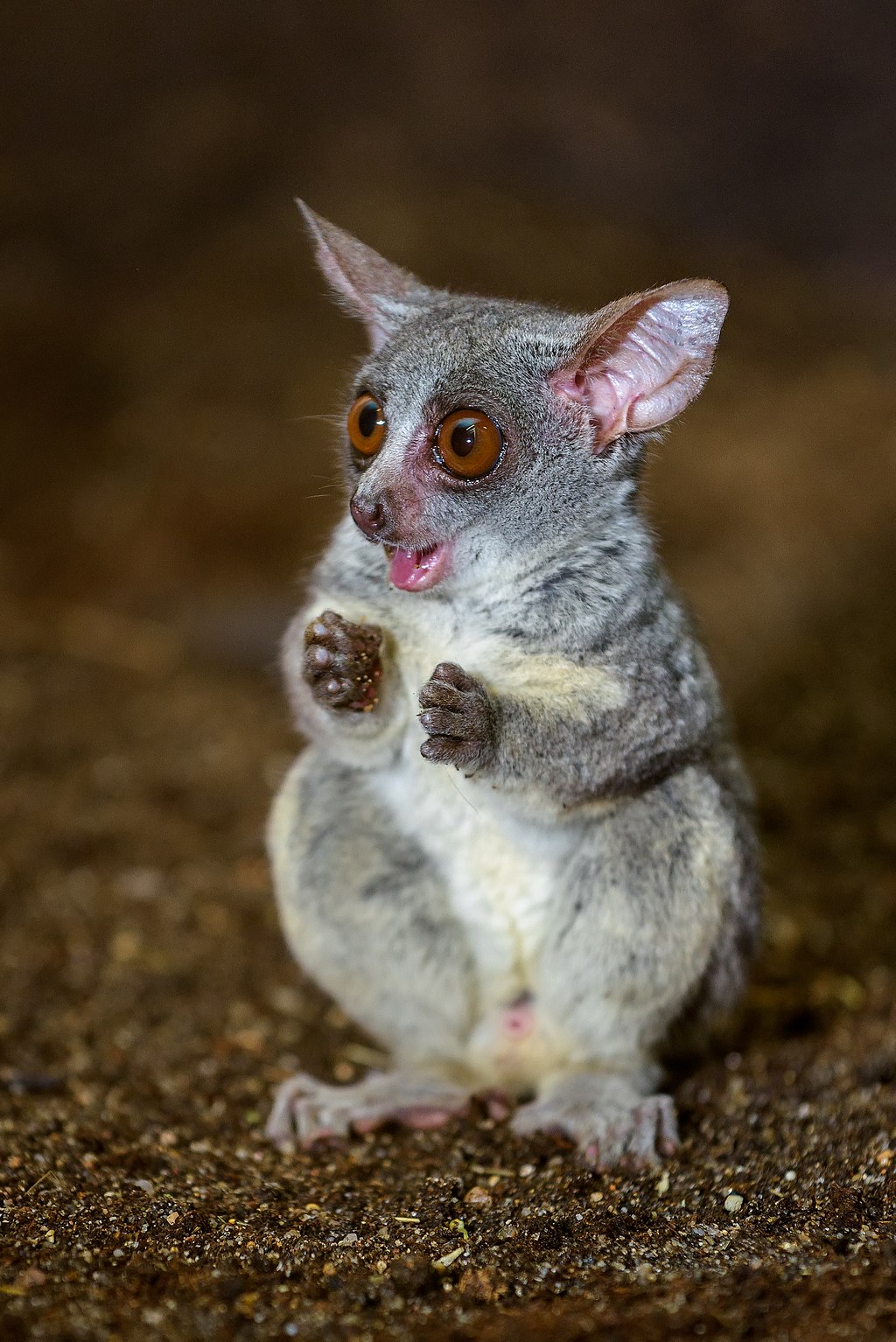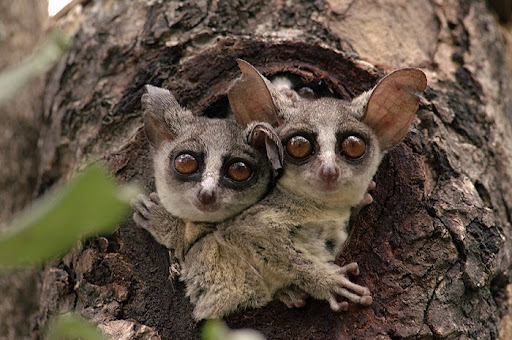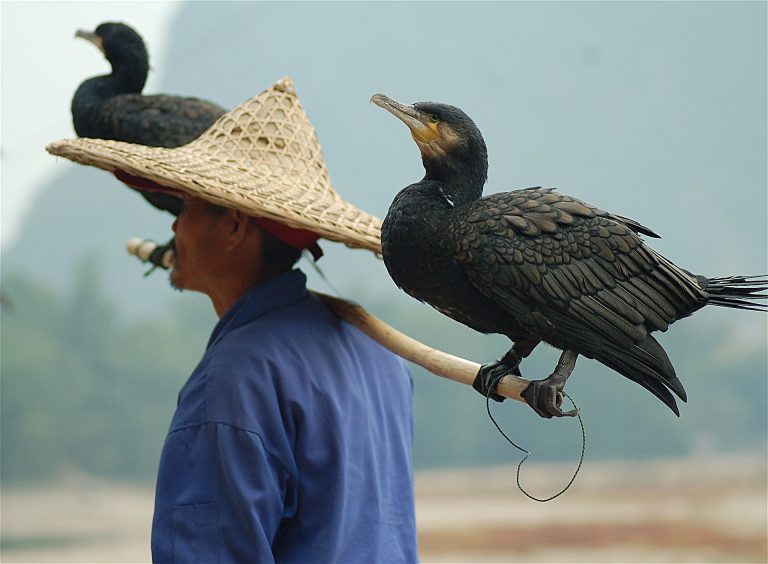Southern and Eastern Africa are home to many species of nocturnal animals. One particularly charming creature is the African Galagos or “bushbaby.” As soon as the sun sets, these diminutive primates make their appearance in the forest. They come from all directions in search of “finger food.” While some fall from the top of ridges, like members of a parachute battalion, others approach along a predetermined path.
Classified as a suborder of primates called Strepsirrhini, which also includes aye-ayes, lemur, lorises, and pottos, Galagos belong to the family Galagidae. Due to the increasing use of genetic science, the taxonomy seems to be ever-changing; but the family is said to include between three and four genera, with 14 to 20 species. According to the IUCN, there are 14 currently recognized species of lesser galagos or bushbabies.
The bushbaby or Lesser Galagos
The Southern Lesser Galago, or bushbaby, is one of the world’s smallest primates. Weighing only about five ounces and measuring up to 14 inches—including a tail longer than the body—they are comparable in size to a small squirrel. In the Afrikaans language, they are called “Nagapie,” meaning “small night monkey and they inhabit northern South Africa, Botswana, Namibia, and Zimbabwe.
A bushbaby’s coat is a wooly brownish-gray to light brown. They have spatulated fingers with curved fingernails like ours, with a specialized grooming nail on the second finger, which is used to comb head and neck fur and clean the ears. The thicker skin on the fingers and toes helps them grasp tree branches and wet surfaces.

Bushbaby superpowers
Bushbabies’ saucer-like eyes are so large in comparison to their heads that they cannot move inside their sockets. Since the eyes face forward, they must turn their entire head to adjust their attention. Their large eyes give them enhanced night vision; while their large, collapsible ears, which rotate independently of one another like radar dishes, give them a keen sense of hearing, important for detecting predators.
Success
You are now signed up for our newsletter
Success
Check your email to complete sign up
Although the lesser bushbaby is prey to many African animals, including large owls, snakes, servals, wild cats, and genets; fire is the most serious hazard to their survival. They have a lifespan of 12 -16 years in the wild. When kept in captivity they can live 10-14 years.
With its strong hind legs—noticeably longer than the front legs—the bushbaby is a remarkable jumper. Its long tail helps it glide an amazing seven feet in one leap, covering up to 30 feet of distance in a matter of seconds, an ability that serves well in escaping predators, as well as catching prey.
With lightning-fast movements, bushbabies can grab flying grasshoppers and moths with their front feet while holding on to a tree with their rear legs. While zipping from tree to tree through the bush they often fold their ears back to shield them from injury.

Lesser galago habits
During the day, the strictly-nocturnal bushbaby hides in leaf nests of acacia trees, hollow tree trunks of mopane trees, abandoned bird nests, or the roofs of buildings. When sleeping they fold their sensitive ears over their ear canals to block out sounds.
The nests are shared by groups of 2-8, however, they spend much of their time foraging on their own. Urinating on their hands and feet is a way for these groupings to identify their territory.
Typically, only one or two 9-gram baby litters are born in the summer and they are born with their eyes open. When a baby is just 2 months old, he or she is capable of living on his or her own. Females give birth to a single infant during their first pregnancy, and subsequently, give birth to twins in the following litters of offspring. During the first 50 days of their lives, the mother carries the infants by the scruff of their necks. The lesser bushbaby’s diet consists mainly of gum from trees, fruits, berries, and insects.
READ ALSO:
- Meet the Lowland Streaked Tenrec of Madagascar
- The Giraffe: A Gentle Giant in Grave Danger
- Buchu: The Ancient Miracle Herb of South Africa
They have at least 18 different calls that correspond to distinct behaviors, including social interaction, aggression, defense, and “tsjak-tsjak” annunciatory noises. Bushbabies will warn their peers of impending danger with a chilling cry that sounds similar to that of a wailing newborn baby.
Their eerie night sounds have given rise to superstitions about mysterious and dangerous monsters in the dark; one of which is a giant rainbow-colored serpent with a feathered head, who kills unwanted guests by pecking a hole in their heads! Another scenario is that the animals lure you out of bed by crying like a child in distress. Once you come close, they hypnotize you with their eyes and eat you up with their razor-sharp teeth.
Bushbabies as pets
In actuality, bushbabies get on quite well with humans and have been known to voluntarily become acquainted with individuals when participating in a ‘braai,’ the Afrikaans word for barbecue. They are quite tame, which allows for the taking of stunning photographs.
While they are undoubtedly charming and adorable, they can be very troublesome as pets. Not only will their ungodly cries and energetic jumping keep you up at night, but their habit of urinating on their hands can also be offensive to the olfactory senses. They need ample room to jump around, plenty of attention to stay happy, and frequent cage cleaning if kept indoors. Most of the northern United States prohibit keeping these tropical animals in captivity, while it is legal to keep them as pets in some of the southern states.
A pair of bushbabies can be kept successfully on a plot of land if the owner has a large enough area and the proper climate. You may leave out “finger food” such as fruits for them to munch on, and you won’t see them again until evening.
Ila Bonczek contributed to this report.













